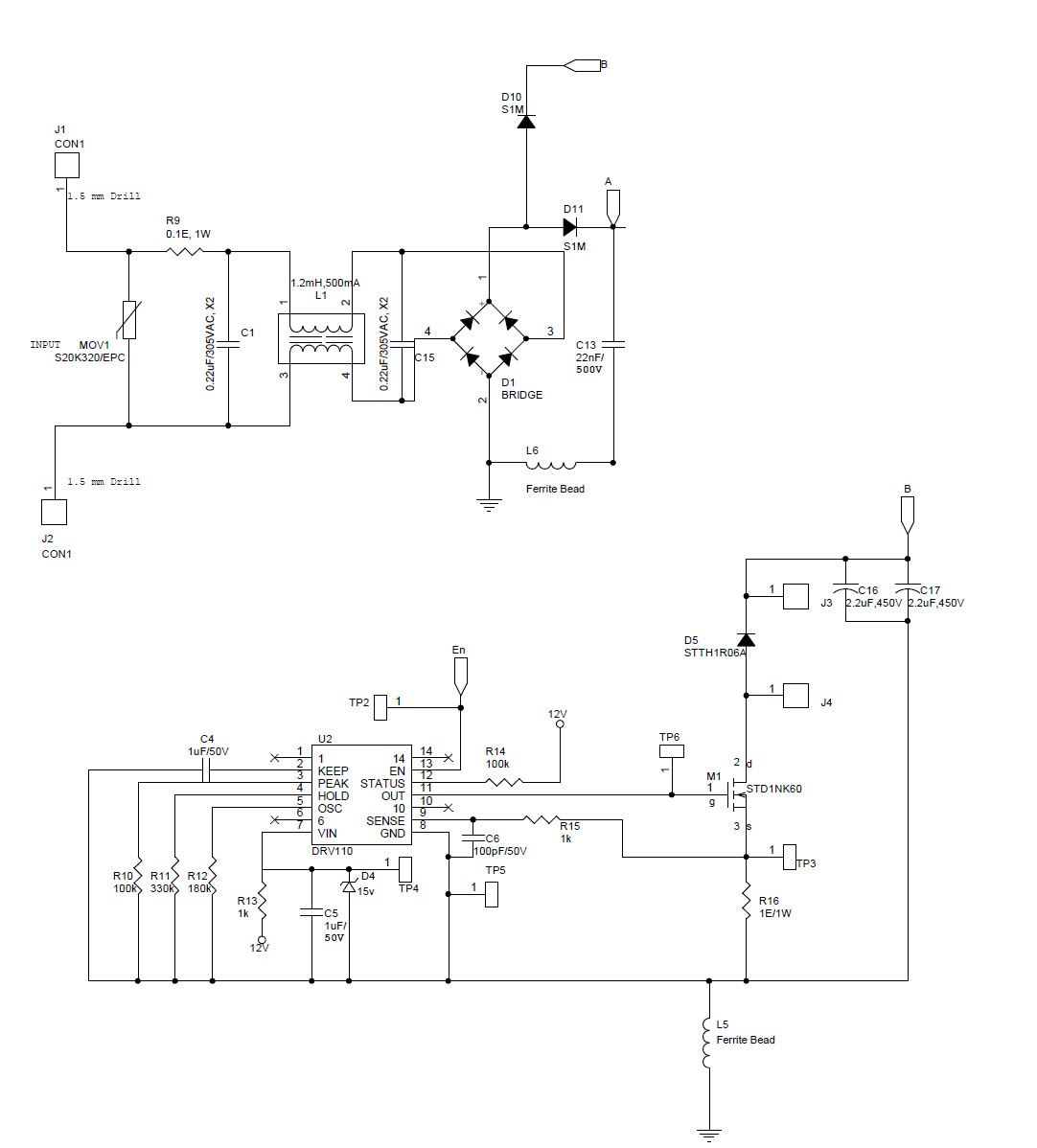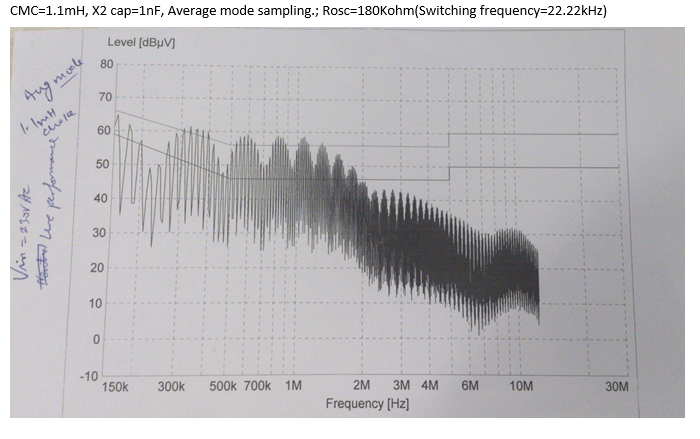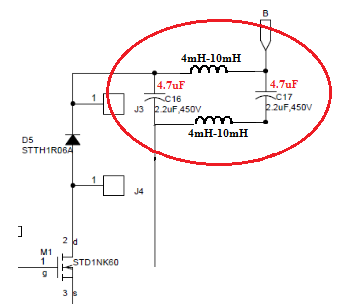I am using DRV110 in quite a few of my designs to control the operation of a solenoid. The solenoid is being driven directly from bridge rectifier output and is being controlled by DRV110. In one of the designs, the input voltage is 230V, 50Hz. It has become almost impossible to get the design compliant to Conducted Emissions test, unlike other EMI/EMC tests. This design is being powered by UCC28710 at 12V. The configuration is non-isolated buck. The emission from only the SMPS section is almost 34-40dB below limit line. As soon as the solenoid is connected, the emission levels shoot up.
I am attaching snapshots of the circuit and emission levels.





